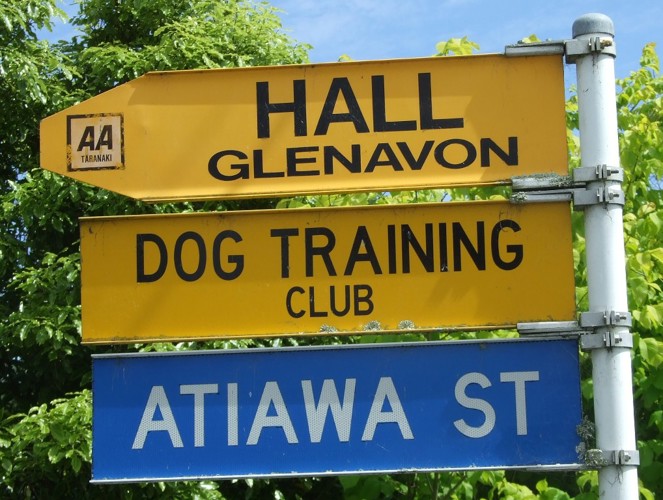 Atiawa Street sign. Mike Gooch. Word on the Street image collection.
Atiawa Street sign. Mike Gooch. Word on the Street image collection.
 Atiawa Street sign. Mike Gooch. Word on the Street image collection.
Atiawa Street sign. Mike Gooch. Word on the Street image collection.
Atiawa Street celebrates the Te Ātiawa Iwi of Taranaki. The origins of Te Ātiawa are said to have come from the heavens themselves. In reciting their whakapapa, Te Ātiawa say they descend from Toi-kai-rakau, the forest eater. He got this name when he arrived in Aotearoa, as he no longer ate cultivated foods, instead opting to eat the natural foods gathered in the forest.
Toi's son Ruarangi married Rongoueroa and they had a son Rauru. Despite her earthly marriage to Ruarangi, Rongoueroa was visited by the spirit Tamarau-Te-Heketanga-A-Rangi (Tamarau) who was entranced by her when he saw her bathing in a stream. He took the form of a man and their union produced a son Awanuiarangi. He was the eponymous ancestor that gave Te Ātiawa their name. Another link to Toi's whanau with those of Taranaki is through the marriage of Pohokura's daughter Piopio, from Taranaki, to Toi's grandson Te Ata-Kore.
Te Ātiawa boundaries extend from Te Rau-o-te-Huia, near Waiau, in the north, to Onuku-tai-pari, in Ngāmotu, to the sandy gully that descends to the coast immediately at the southern base of Paritutu. An old saying likened Te Ātiawa to "Te toki te tangatanga e te rā" - that is "Te Ātiawa is like an adze whose fastenings can not come loose in the sun". Te Ātiawa Iwi of Taranaki is bound as one people under Maunga Taranaki.
This story was originally published in the Taranaki Daily News.
Please do not reproduce these images without permission from Puke Ariki.
Contact us for more information or you can order images online here.